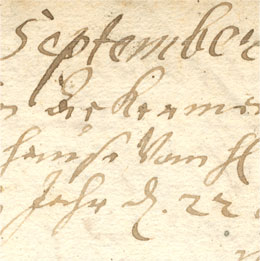What makes the Hopner house interior portal unique?
This interior portal, which was fashioned in 1681 for a private house on Tallinn’s Raekoja plats [Town Hall Square], is the only nonreligious work ascribed to Ackermann that has survived to this day.
Who commissioned this interior portal from Ackermann?
The man who commissioned this work was Johan Höppner, a merchant who was born in Lübeck. He bought this house on Raekoja plats in 1662 and had it modernised: enlarged its windows and doors, painted foliage on its joists, and built cupboards and wall panels. The living room’s carved portal was completed in 1681, as the date added to its cornice affirms. It has been ascribed to Christian Ackermann based on the analysis of its style.
In what sense did this work differ from earlier works?
Ackermann’s portal with carvings differed from the city’s earlier interior portals. The portal’s pilasters as well as its cornice corbels and socles are decorated using décor approximating nature, which had just come into fashion, and genuinely Ackermann-like putto heads have been added to the flower garlands decorating its capitals.
Explicit moralising rhetoric had previously dominated in the design of (internal) portals, which was conveyed by way of aphorisms that were either carved or hewn into the portal. The portal ornamentation carved by Ackermann pointed to morals more indirectly.
